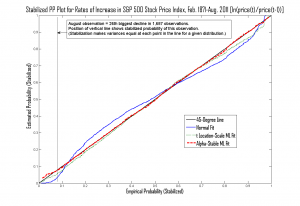Expect one thing from President Obama’s speech on Thursday: a mini ARRA, a smaller version of essentially the same stimulus plan as that of 2009. He will probably call for putting the unemployed construction workers to work on infrastructure projects, he will propose tax incentives to firms to hire the unemployed, he will keep pushing for the weatherization of buildings and more funding to teachers and schools. He will keep advocating a free trade agenda, whatever form that might take. And if informed pundits are correct, he will ask for about a third of the ARRA funds, around $300 billion.
In 2009 ARRA passed a total of $787 billion (which was extended to $840 billion). About a third was allocated to tax cuts, another third went to entitlements and the remaining third (about $275b of which $205b have been disbursed) went to finance various projects through grants, loans and contracts—yes, the same weatherization projects he was advocating at the beginning of his presidency, the same teacher retention programs, school renovations, the same subsidies to firms for (true, mostly green) energy production.
It does not appear that we will see much that is new tomorrow, but the approach will be much more timid, given the deficit phobia that has gripped Washington. To be clear, the Recovery Act worked, but had a rather small impact on jobs for two reasons: 1) the actual direct job creation component was far too small (for the most part it was contained in that third, which went to grants, contracts and loans); and 2) it was poorly targeted (not all of these funds actually created new jobs for the unemployed—a topic for a different post).
With such a small direct job creation component, it is no surprise that ARRA created only 1.2 million jobs in direct employment. If we consider the secondary, tertiary and subsequent effects from the entire ARRA spending (including tax rebates and entitlements) and account for a multiplier effect, whose high estimate according to the CBO is $2.50, we are looking at 3.3 million jobs created from ARRA in 2 years (2009-q2 to 2011-Q1). So yes, the ARRA did create jobs, but too few and at a time when the economy was experiencing its fastest private sector job loss since the Great Depression.
In January 2009, I argued that what the president should do in his ARRA proposal is offer direct employment to the jobless immediately and without delay. If instead of all the tax cuts, subsidies, and entitlement extensions he had offered full-time employment to the unemployed in transitional public sector jobs at a living wage, we would have prevented the precipitous increase in the unemployment rate that followed. Furthermore, had we targeted the ARRA better (a topic for another discussion) we could have created 10-20 million jobs for the same price tag!
But we did not embrace the bold approach then and we will definitely not embrace it now. continue reading…




 ShareThis
ShareThis